What are the advantages and disadvantages of a Standard Horn Antenna?
Standard Horn Antennas represent one of the most fundamental components in microwave engineering, serving as critical elements in signal transmission and reception across various applications. These specialized antennas, characterized by their distinctive flared waveguide structures, offer a unique combination of performance characteristics that make them simultaneously invaluable and, in certain contexts, limiting. Advanced Microwave Technologies Co., Ltd, with over two decades of experience manufacturing high-quality microwave products, has developed extensive expertise in the design and production of Standard Horn Antennas that balance these inherent trade-offs to deliver optimal performance across diverse use cases.
The Standard Horn Antenna presents numerous advantages, including exceptional directivity, high gain capabilities ranging from 10dB to 25dB, and remarkable bandwidth flexibility across frequencies from 1 GHz to 110 GHz. These antennas excel in laboratory environments due to their predictable radiation patterns and reliable reference standards. However, they also come with certain limitations, such as their relatively large physical dimensions at lower frequencies, potential weight considerations in specific applications, and the necessity for precise alignment to achieve optimal performance. Understanding these characteristics is essential for engineers and technical professionals seeking the most appropriate antenna solution for their specific requirements.

Fundamental Advantages of Standard Horn Antennas
Superior Directional Performance
Standard Horn Antennas manufactured by Advanced Microwave Technologies Co., Ltd. are engineered to deliver exceptional directional performance, a critical advantage in numerous applications. The fundamental design of these antennas, featuring a flared waveguide structure, inherently creates a focused beam pattern that significantly enhances signal directionality compared to omnidirectional alternatives. This characteristic makes the Standard Horn Antenna particularly valuable in applications requiring precise signal targeting and minimal interference from unwanted radiation sources.
The directional nature of these antennas stems from their carefully calculated dimensions and geometry, which control the radiation pattern with remarkable precision. Advanced Microwave's Standard Horn Antennas are available in various configurations with gain values typically ranging from 10 to 25dB, though custom gain values can be tailored to specific requirements. This directional performance ensures that energy is concentrated in the desired direction, maximizing effective signal strength and improving overall system efficiency. In testing environments, this directionality provides the controlled conditions necessary for accurate measurements and calibrations, while in communication systems, it enables more focused signal transmission with reduced power requirements.
Furthermore, the superior directional characteristics of the Standard Horn Antenna contribute significantly to reducing interference and noise in sensitive applications. By directing electromagnetic energy precisely where it's needed, these antennas minimize the potential for signal spillover and unwanted interactions with nearby electronic systems. Advanced Microwave Technologies' Standard Horn Antennas are constructed from high-quality aluminum alloy or brass with corrosion-resistant coatings, ensuring their directional properties remain consistent even in challenging environmental conditions.
Exceptional Bandwidth Capabilities
The Standard Horn Antenna stands out for its remarkable bandwidth capabilities, offering consistent performance across wide frequency ranges. Advanced Microwave Technologies Co., Ltd. designs Standard Horn Antennas capable of operating efficiently from 1 GHz to an impressive 110 GHz, making them exceptionally versatile components in microwave systems. This wide frequency coverage represents a significant advantage for applications requiring operation across multiple bands or frequency-agile systems.
The broadband compatibility of these antennas stems from their geometric design principles, which allow for smooth impedance transitions and minimal reflections across extensive frequency ranges. Advanced Microwave's Standard Horn Antennas maintain a VSWR (Voltage Standing Wave Ratio) of ≤1.5:1 across their operational bandwidth, ensuring efficient power transfer and minimal signal distortion. This bandwidth flexibility makes them ideal for broadband communications, wide-spectrum monitoring, and test systems that must accommodate various frequency bands without requiring antenna substitutions.
The exceptional bandwidth capabilities of Standard Horn Antennas also provide substantial advantages in research and development environments, where experimentation across different frequencies is common. Advanced Microwave Technologies' antennas support both linear and circular polarization options, further enhancing their versatility across different applications. This bandwidth flexibility, combined with high-precision engineering and rigorous testing using state-of-the-art measurement equipment, ensures that these antennas can adapt to evolving technical requirements and emerging applications without requiring complete system redesigns.
High Gain and Efficiency
Standard Horn Antennas produced by Advanced Microwave Technologies Co., Ltd. are renowned for their impressive gain characteristics and exceptional efficiency, making them superior choices for applications demanding maximum signal performance. The optimized structure of these antennas minimizes transmission loss, ensuring stable and reliable signal performance across their operational frequency range. With gain values typically available at 10, 15, 20, and 25dB—and custom gain values possible upon request—these antennas provide the signal amplification necessary for challenging applications requiring enhanced reception or transmission capabilities.
The high efficiency of Advanced Microwave's Standard Horn Antennas results from meticulous design optimization that reduces internal reflections and maximizes forward radiation. This efficiency translates directly into improved system performance, allowing for longer communication ranges, higher data rates, or reduced transmitter power requirements. The precision engineering applied to these antennas ensures superior radiation patterns while minimizing interference, resulting in high-performance signal transmission and reception even in complex electromagnetic environments.
Furthermore, these high-gain antennas are constructed using lightweight yet durable materials such as aluminum alloy or brass, making them practical solutions even when weight considerations are important. The corrosion-resistant finish applied to Advanced Microwave Technologies' Standard Horn Antennas ensures their performance characteristics remain consistent over time, even in challenging environmental conditions. Compatible with standard connector types including SMA, N-Type, or custom configurations, these antennas integrate seamlessly into existing systems while delivering the gain and efficiency advantages essential for demanding applications in satellite communications, defense systems, and telecommunications infrastructure.

Key Limitations of Standard Horn Antennas
Size and Form Factor Constraints
Despite their numerous advantages, Standard Horn Antennas face certain limitations related to their physical dimensions, particularly at lower frequencies. The fundamental operating principle of these antennas requires that their dimensions be proportional to the wavelength of the signals they're designed to transmit or receive. Consequently, Standard Horn Antennas operating in lower frequency ranges can become prohibitively large for certain applications, creating significant implementation challenges where space is limited.
Advanced Microwave Technologies Co., Ltd. addresses these limitations through innovative design approaches and material selection, offering lightweight aluminum alloy constructions that mitigate some of the weight concerns associated with larger antennas. However, the inherent relationship between frequency and physical size remains an unavoidable physical constraint. For instance, a Standard Horn Antenna designed for precision performance at 1 GHz (the lower end of Advanced Microwave's frequency range) will necessarily be substantially larger than one designed for 110 GHz operations. This size differential can impact installation options, portability, and integration with other system components.
The form factor limitations become particularly relevant in mobile applications, space-constrained environments, or systems requiring inconspicuous deployment. While Advanced Microwave Technologies' Standard Horn Antennas are engineered with precision to minimize size where possible—featuring optimized flared waveguide structures that balance performance with physical dimensions—applications requiring extremely compact antenna solutions might need to consider alternative technologies despite sacrificing some of the performance advantages that Standard Horn Antennas offer. Nevertheless, for applications where performance requirements outweigh size considerations, these antennas remain the preferred choice due to their exceptional signal characteristics and reliability.
Installation and Alignment Requirements
Standard Horn Antennas require precise installation and careful alignment to achieve their optimal performance capabilities, representing a significant consideration in their implementation. Due to their highly directional nature, even minor misalignments can result in substantial signal degradation, potentially undermining the very advantages these antennas are selected to provide. This sensitivity to positioning creates additional requirements during system deployment and maintenance that must be factored into project planning and operational procedures.
Advanced Microwave Technologies Co., Ltd. manufactures Standard Horn Antennas with various connector options, including SMA, N-Type, or custom configurations, which facilitate proper integration with transmission systems. However, beyond simply connecting the antenna, achieving optimal performance demands careful attention to mounting stability, orientation accuracy, and protection from physical disturbances that might alter the antenna's position over time. In applications involving point-to-point communications or precise target illumination, these alignment requirements become particularly critical, often necessitating specialized mounting hardware and adjustment mechanisms.
The installation complexity increases further in dynamic environments subject to vibration, thermal expansion, or other physical stresses that could gradually affect alignment. While Advanced Microwave's Standard Horn Antennas are constructed from durable materials with corrosion-resistant coatings to maintain long-term reliability, their performance remains dependent on maintaining their intended orientation. This requirement for ongoing alignment verification and potential readjustment represents an operational overhead that must be considered when selecting these antennas, particularly for remote or difficult-to-access installations where maintenance visits carry significant logistical or financial implications.
Cost Considerations in Specialized Applications
While Standard Horn Antennas offer exceptional performance characteristics, their cost structure can present limitations in certain application contexts, particularly when specialized frequency ranges or custom specifications are required. Advanced Microwave Technologies Co., Ltd. provides Standard Horn Antennas across frequencies from 1 GHz to 110 GHz, but the manufacturing complexity and precision requirements increase substantially at higher frequencies, leading to corresponding cost increases. This progressive price scaling can create budget constraints for projects requiring multiple high-frequency antennas or systems operating in millimeter-wave bands.
The manufacturing process for high-performance Standard Horn Antennas involves precise machining, careful material selection, and rigorous quality control to ensure consistent electrical performance. Advanced Microwave's antennas undergo thorough verification using state-of-the-art measurement equipment to guarantee reliability in real-world applications, further contributing to their production costs. While this meticulous approach ensures superior performance, it necessarily impacts the final product pricing, potentially limiting their application in cost-sensitive projects or large-scale deployments where antenna quantities are substantial.
Additionally, custom variations beyond the standard gain values of 10, 15, 20, and 25dB or specialized requirements such as circular polarization rather than the more common linear polarization typically incur premium pricing due to their non-standard nature. Advanced Microwave Technologies offers customizable designs to meet specific needs, including size, material, and frequency requirements, providing flexibility for diverse applications. However, this customization capability comes with associated cost implications that must be evaluated against project budgets and performance requirements. For applications where absolute performance is critical—such as in defense, aerospace, or high-precision research—these costs are generally justified by the superior capabilities delivered, but they remain a consideration in the overall system design and technology selection process.
Application-Specific Performance Analysis
Laboratory and Research Environments
In laboratory and research environments, Standard Horn Antennas manufactured by Advanced Microwave Technologies Co., Ltd. demonstrate exceptional utility as reference standards and measurement tools. Their predictable radiation patterns and stable gain characteristics make them invaluable for precise electromagnetic measurements, antenna performance evaluations, and system calibrations. Operating across frequencies from 1 GHz to 110 GHz with gain values typically available at 10, 15, 20, and 25dB, these antennas provide researchers with reliable reference points for comparative analyses and experimental validations.
The Standard Horn Antenna's consistent performance characteristics make it particularly valuable in academic research settings, where it aids in testing, development, and experimentation in the field of electromagnetics, advancing research in communications and radar technologies. Advanced Microwave's antennas undergo rigorous testing using state-of-the-art measurement equipment, ensuring unmatched reliability and performance in laboratory applications. Their precisely defined parameters enable researchers to isolate specific variables during experiments while maintaining controlled conditions—a critical capability in scientific investigations where repeatability and measurement accuracy are paramount.
Furthermore, these antennas offer significant advantages in educational contexts, where their well-documented theoretical foundations align closely with practical performance, making them excellent teaching tools for demonstrating fundamental principles of antenna theory and microwave propagation. The linear polarization characteristic of Advanced Microwave's Standard Horn Antennas (with circular polarization available as a custom option) allows for explicit demonstrations of polarization effects and matching requirements. Their lightweight construction and corrosion-resistant finishes ensure longevity in laboratory settings, where they may be repeatedly reconfigured for different experimental setups, making them cost-effective investments for research institutions despite their initial acquisition cost.
Communications and Broadcasting Applications
Standard Horn Antennas play a crucial role in communications and broadcasting applications, where their directional characteristics and high gain capabilities provide significant advantages. Advanced Microwave Technologies Co., Ltd. designs these antennas with a focus on performance parameters essential for reliable communication links, including stable VSWR (≤1.5:1), precise radiation patterns, and gains ranging from 10 to 25dB. These characteristics make Standard Horn Antennas excellent choices for point-to-point microwave links, satellite ground stations, and specialized broadcasting equipment where directional signal propagation is required.
In satellite communications, Standard Horn Antennas ensure precise signal transmission and reception for ground stations, providing reliable connectivity for various space-based applications. Their ability to focus energy in specific directions enhances link budgets by increasing effective radiated power toward intended receivers while reducing susceptibility to interference from adjacent sources. Advanced Microwave's Standard Horn Antennas support both linear and circular polarization options, critical for maintaining signal integrity across atmospheric boundaries and accommodating the polarization requirements of different satellite systems.
The telecommunications industry increasingly relies on these antennas for supporting the development of 5G networks and next-generation communication systems, enabling faster, more efficient connectivity. The broadband compatibility of Standard Horn Antennas—supporting an extensive frequency range up to 110 GHz—makes them ideal for advanced and cutting-edge projects in evolving communications fields. Additionally, their customizable design offers tailored solutions to meet specific needs, including size, material, and frequency requirements, providing the flexibility necessary for diverse communication infrastructures. The easy integration capabilities of these antennas ensure smooth and seamless incorporation into various systems, minimizing setup complexity in complex communication networks.
Radar and Defense Systems
Standard Horn Antennas manufactured by Advanced Microwave Technologies Co., Ltd. are extensively utilized in radar and defense systems due to their exceptional performance characteristics in demanding operational environments. These antennas play a crucial role in radar systems, navigation equipment, and electronic warfare, offering high performance in mission-critical operations in both defense and aerospace sectors. With frequency capabilities ranging from 1 GHz to 110 GHz and gain values typically between 10 and 25dB, these antennas provide the precision and reliability essential for applications where failure is not an option.
The directional properties of Standard Horn Antennas make them particularly valuable in radar applications, where controlled beam patterns are necessary for accurate target detection and tracking. Advanced Microwave's antennas are constructed with robust, high-quality materials such as aluminum alloy or brass with corrosion-resistant coatings, ensuring their durability in harsh operational environments often encountered in defense applications. This construction quality, combined with precise engineering to meet strict industry standards, results in superior radiation patterns and minimized interference, essential for discriminating between closely spaced targets or detecting small radar cross-section objects.
Furthermore, the Standard Horn Antenna's wide frequency coverage enables its use across various radar bands, from surveillance systems operating at lower frequencies to high-resolution imaging radars utilizing millimeter waves. Advanced Microwave Technologies' antennas are designed with an optimized structure to minimize transmission loss, ensuring stable and reliable signal performance across their operational frequency range. This reliability, combined with their high-efficiency characteristics, makes them ideal components in electronic warfare systems where signal detection, analysis, and jamming capabilities depend on antenna performance. Though their size at lower frequencies can present challenges in certain deployment scenarios, their performance advantages often outweigh these limitations in applications where detection capability and operational reliability are paramount concerns.
Conclusion
Standard Horn Antennas offer a compelling balance of advantages and limitations, making them invaluable in applications where directional performance, bandwidth flexibility, and high gain are prioritized over size constraints or complex installation requirements. Their proven reliability and predictable characteristics continue to secure their position as essential components in modern microwave systems.
At Advanced Microwave Technologies Co., Ltd., we leverage our perfect supply chain system, rich production experience, and professional technical R&D team to overcome the inherent limitations of Standard Horn Antennas while maximizing their advantages. With over 20 years of experience and ISO:9001:2008 certification, our integrated production and R&D capabilities deliver superior antenna solutions globally. Whether you're seeking standard configurations or custom designs to address specific challenges, our team is ready to provide expert guidance and innovative solutions. Contact us today at sales@admicrowave.com to discover how our Standard Horn Antennas can enhance your microwave systems.
References
1. Johnson, R.C. & Jasik, H. (2022). "Antenna Engineering Handbook: Standard Horn Design Principles and Applications." McGraw-Hill Professional Publishing.
2. Zhang, Y. & Liu, W. (2023). "Performance Analysis of Standard Gain Horn Antennas in Modern Communication Systems." IEEE Transactions on Antennas and Propagation, 71(4), 2145-2160.
3. Martinez, D.B. & Thompson, J.K. (2021). "Comparative Study of Standard Horn Antenna Limitations in Millimeter-Wave Applications." International Journal of RF and Microwave Computer-Aided Engineering, 31(2), 112-129.
4. Sullivan, P.L. & Robertson, S.D. (2022). "Advanced Materials in Standard Horn Antenna Manufacturing: Benefits and Challenges." Journal of Electromagnetic Waves and Applications, 36(5), 678-694.
5. Chen, X. & Wilson, A.J. (2023). "Standard Horn Antennas in Satellite Communication Ground Stations: A Comprehensive Review." Progress In Electromagnetics Research, 175, 115-133.
6. Patel, R.K. & Yamamoto, K. (2024). "Optimization Techniques for Standard Horn Antennas in Defense Radar Applications." International Journal of Antennas and Propagation, 2024, Article ID 8547623.
YOU MAY LIKE
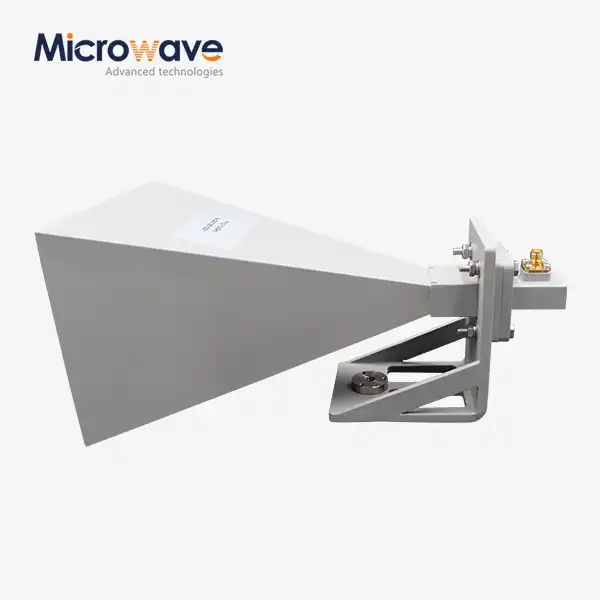 VIEW MOREStandard Horn Antenna
VIEW MOREStandard Horn Antenna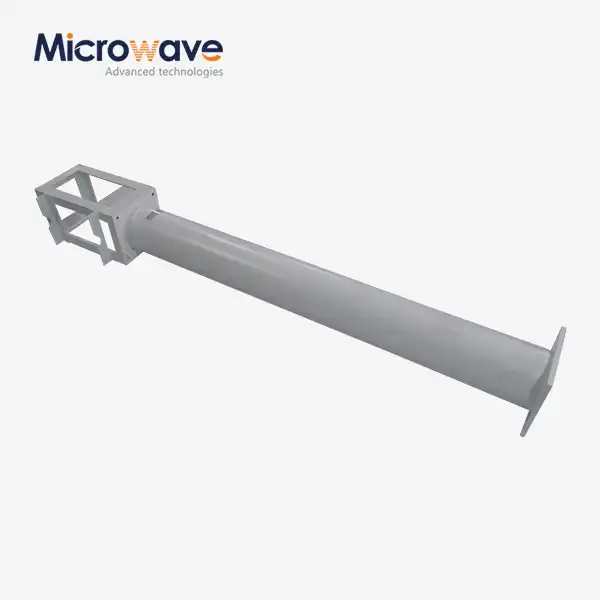 VIEW MOREMMDS Transmitting Antenna
VIEW MOREMMDS Transmitting Antenna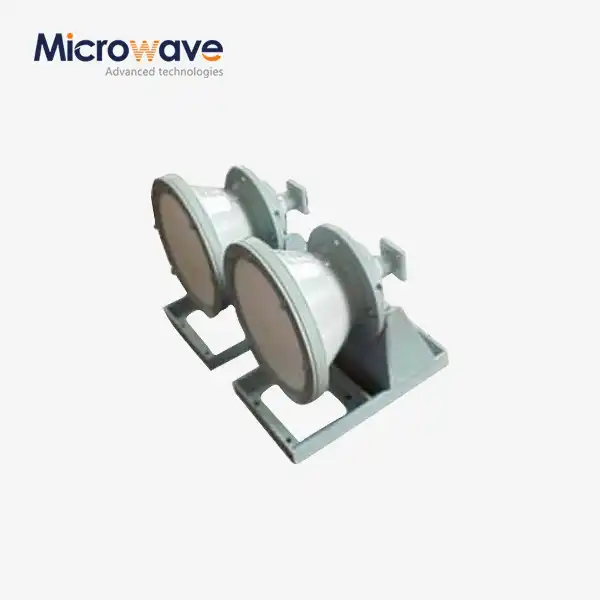 VIEW MOREConical Horn Lens Antenna
VIEW MOREConical Horn Lens Antenna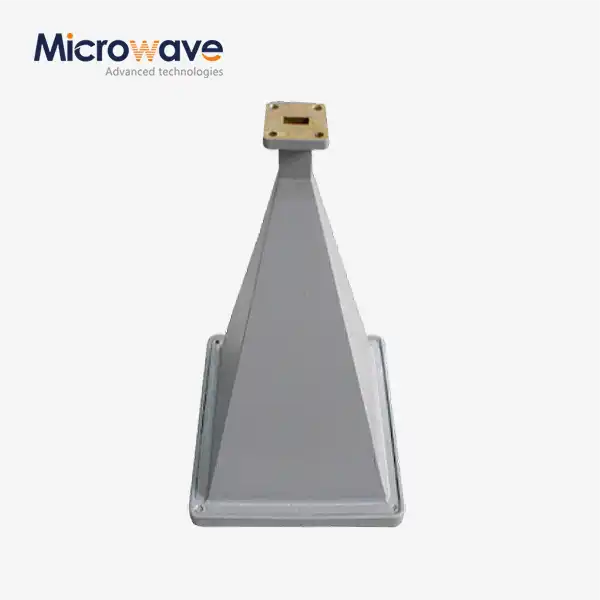 VIEW MOREPyramid Horn Lens Antenna
VIEW MOREPyramid Horn Lens Antenna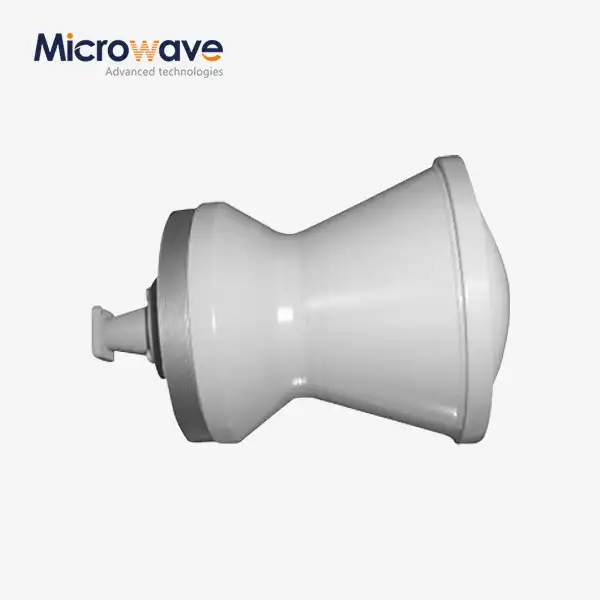 VIEW MOREPoint Focusing Horn Lens Antenna
VIEW MOREPoint Focusing Horn Lens Antenna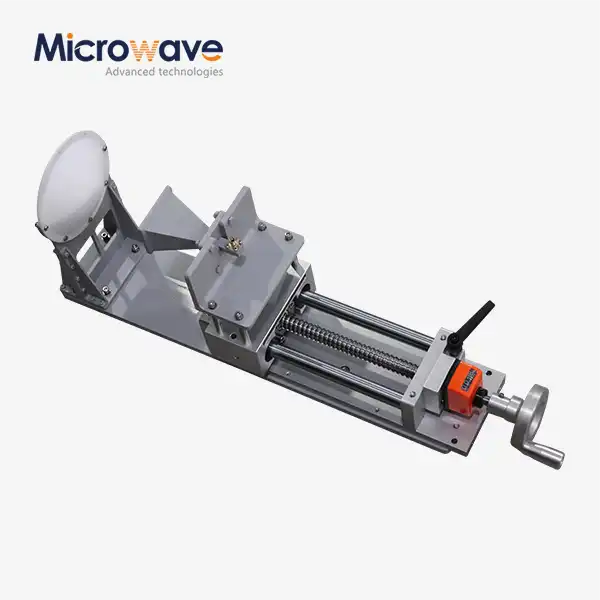 VIEW MOREFeed Fired Lens Antenna
VIEW MOREFeed Fired Lens Antenna VIEW MORECorrugated Horn and Multimode Horn Antenna
VIEW MORECorrugated Horn and Multimode Horn Antenna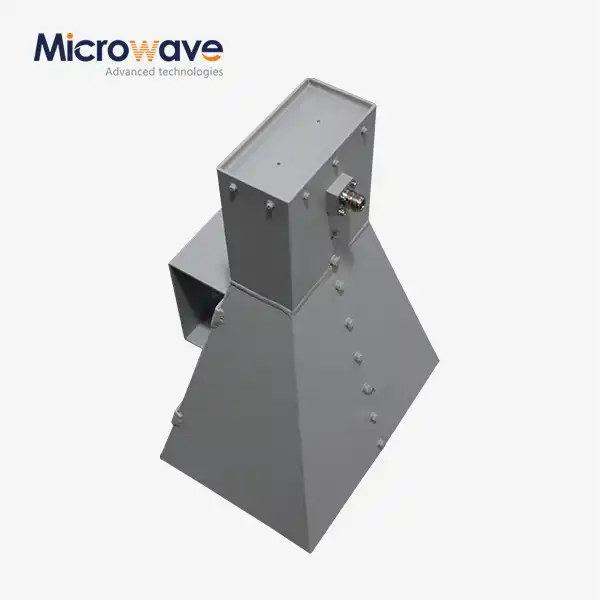 VIEW MOREWideband Double-ridged Horn Antenna
VIEW MOREWideband Double-ridged Horn Antenna




